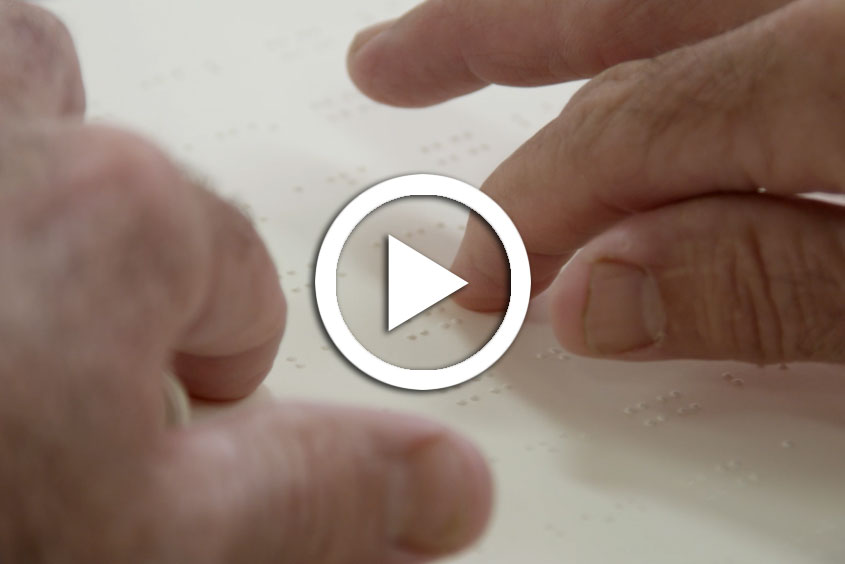BRAILLE SERVICES
“Once you no longer have the ability to see the printed word, you rely on touch and feel, and interact with symbols. Braille helps build the path to literacy for individuals who are adjusting to sight loss.”

How Braille Services Help You
Technological advancements have made braille far more usable for people who are blind. Apart from making it easier to convert, it also makes braille far more portable.It’s clear that technology will continue to make huge breakthroughs in enabling blind and partially sighted people to communicate in new ways in the future. But for almost two centuries little has equaled the practicality and simplicity of braille.
Lighthouse Central Florida provides individual and group instruction in the skills of learning and utilizing braille in everyday life. Graduates of braille instruction are better equipped to maintain independence personally and professionally with the ability to read and write braille. Areas of instruction may include braille for labeling, orientation, recreation, note taking or extensive reading. Learning braille can make it much easier to perform a variety of daily tasks such as taking medications, cooking, accessing telephone numbers and restaurant menus or simply taking down a quick note.
Braille Readiness
Braille readiness is the first step to learning braille for a child or an adult. Exercises are carefully designed to sensitize the fingers, which is crucial to developing the necessary skills to read braille. Training the fingers to feel subtle differences in shapes, line patterns and dot patterns are just a few areas covered by our instructors during the initial phase of braille coursework.
Braille Reading and Writing
Reading and writing is an important part of our daily lives. Learning to use the tools to read and write Braille is a lot like learning to read and write print. Printed letters and Braille cells are both elements used to create a communicative, non-verbal language and, therefore, are very similar. The first step is to learn each of these symbols and what they mean – basically learning the alphabet in a different way. The next is to learn to recognize the patterns that the letters form, which eventually leads to the comprehension of words, sentences and paragraphs. These steps are taught in our Braille instruction courses.
Braille for Orientation
This section of the coursework will provide instruction on how to read braille for orientation. Activities involve learning to identify braille in a public setting in order to navigate surroundings (example: knowing which bathroom to enter, pushing the correct floor button on an elevator or getting a soda from a vending machine).
Braille Labeling
Learning how to correctly label food, medication and toiletries are just a few examples of the Braille Labeling section of our coursework. Students are taught how to utilize the tools necessary to create various types of labels. Strategies for effective labeling and organization are also part of this section.
Braille for Recreation
Some students find that they are no longer able to play cards or board games they used to enjoy before vision loss. There are many games labeled in braille available for purchase, and students can also learn to label their own games. Braille can provide a means for returning to these meaningful social activities.
Uncontracted vs. Contracted Braille
Both uncontracted and contracted braille are taught at Lighthouse, and each is beneficial for different reasons. In uncontracted braille (sometimes called “grade 1 braille”), words are spelled out letter by letter. Students who only want braille for labeling or recreation might only need to learn uncontracted braille. Contracted braille (or “grade 2 braille”) is very similar to a short-hand style of writing and reading. There are a variety of contractions that stand for either groups of letters or whole words. The student who wishes to sit down and read a book, restaurant menu, or take many notes in braille, would benefit from learning contracted braille. This is the standard code for braille materials, as it helps save space, since braille takes up so much more room than print.
Reading and writing is an important part of our daily lives. Learning to use the tools to read and write Braille is a lot like learning to read and write print.
Training the fingers to feel subtle differences in shapes, line patterns and dot patterns are just a few areas covered by our instructors during the initial phase of braille coursework.
Graduates of braille instruction are better equipped to maintain independence personally and professionally with the ability to read and write braille.

